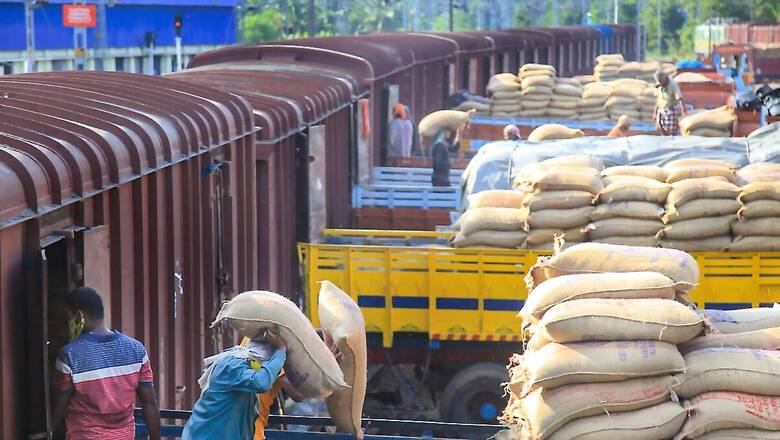
views
India’s ambitious Dedicated Freight Corridor (DFC) has reached 80% completion, with the Railways targeting June 2024 for the final touches. The foundation for the ambitious project was laid 18 years ago, but it has seen more capital outlay and construction pace under the Narendra Modi government.
The Dedicated Freight Corridor, once fully operational, will prove to be a gamechanger for India since at present freight trains are made to wait for passenger trains on common rail lines, not an ideal situation for a fast-growing economy that aims to become an industrial superpower.
For example, as of now, freight trains from Mumbai take three days to reach Delhi. Once all sections of the DFC are complete, the duration will be reduced to 48 hours. The average speed of a freight train is 20 to 25 km per hour as of now. With the DFC, this would go up to 60 km per hour, officials said.
Last week, the DFC set a new milestone. As many as 154 trains carrying items ranging from coal, steel, iron to foodgrains ran on the newly-commissioned sections of the eastern segment of the corridor. On an average day, around 140 trains ply the Eastern Dedicated Freight Corridor (EDFC). The other half of the ambitious project – the Western Dedicated Freight Corridor (WDFC) – runs almost parallel to the Western arm of the Golden Quadrilateral road project which was the brainchild of the Atal Bihari Vajpayee government.
The ultimate goal is to connect the EDFC and WDFC with coastal freight corridors that are to come up in central and southern India. Indian Railways’ special purpose vehicle, DFCCIL, is working on detailed projects to connect the entire country with such railway corridors.
The DFC covers nine states, spans 77 districts and involved approximately 11,000 hectares of land acquisition. Although it was given the go-ahead by Union Cabinet in 2006, the project saw huge delays due to land acquisition problems and cost overruns.
A recent study by Railway Board also highlights how the DFC can play a crucial role in meeting India’s growing power demands. India is still heavily dependent on coal power, and fast freight trains on the DFC can help take this precious commodity from the mines to power stations across the country. Officials said Railways is planning the alignment of ‘coal corridors’ with the DFC.
While burning coal is not environment-friendly, rail-based freight movement is a better option than container trucks.
The DFC will also greatly reduce travel time and clear up much-needed traffic for passenger rail routes.
Last year, Prime Minister Narendra Modi unveiled the ‘The National Logistics Policy’ with the goal of cutting the current cost of transporting India-made goods internally and to the world by half by 2030. Logistics costs in India are 16% compared to 10% in China. To achieve this, there will be heavy reliance on rail transport.
According to the National Rail Plan (NRP) 2020, the goal is to increase the modal share of rail to 40%-45% of the logistics market to move 3,600 million tonnes (MT) of cargo by 2030-31.
Rail freight costs the least at Rs 1.6 per tonne kilometre, making railways one of the cheapest modes of transporting good and commodities.
In FY 2022-23, Indian Railways recorded the best-ever performance in its recorded history in terms of the output from the freight business in the financial year 2022-23 with an originating freight loading of 1512 MT.


















Comments
0 comment